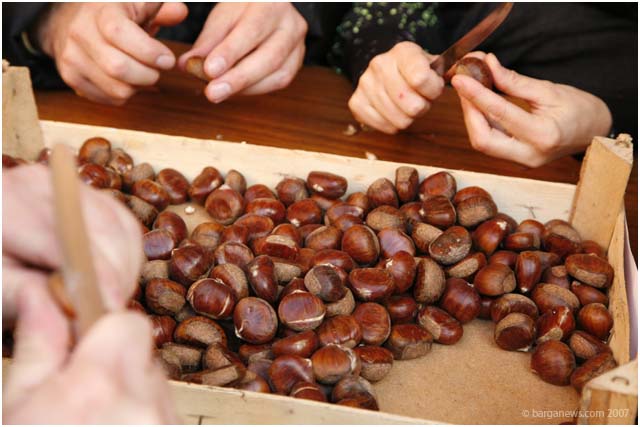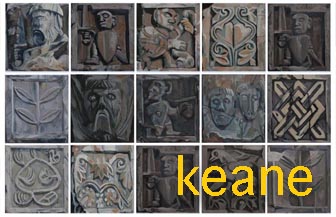 Another article from Liz Taylor who moved to this area in 2008 . As she says in her blog “A new life in Tuscany” – I’ve always felt at home in Italy. At sixty I was ready to retire from work, but not from life, so I came to Tuscany and began again, the Italian way. It certainly has been a time of many changes and challenges, and has tested my resolve, but I love it here. I am not in any way an authority on Italy, I have everything to learn, so my blog is simply my own observations, experiences and what I pick up along the way, which may well be factually wide of the mark or quite different in other regions of Italy. But it is life through my eyes, and there is so much still to come. Through her many articles over the last couple of years she has shown and shared with us an acute eye for detail and a strong love for this area, its people, climate and customs.
Another article from Liz Taylor who moved to this area in 2008 . As she says in her blog “A new life in Tuscany” – I’ve always felt at home in Italy. At sixty I was ready to retire from work, but not from life, so I came to Tuscany and began again, the Italian way. It certainly has been a time of many changes and challenges, and has tested my resolve, but I love it here. I am not in any way an authority on Italy, I have everything to learn, so my blog is simply my own observations, experiences and what I pick up along the way, which may well be factually wide of the mark or quite different in other regions of Italy. But it is life through my eyes, and there is so much still to come. Through her many articles over the last couple of years she has shown and shared with us an acute eye for detail and a strong love for this area, its people, climate and customs.
On a grey, drizzly day last week Marco’s chestnuts were ready for shelling. He is a traditionalist and produces farina di castagna, chestnut flour, as it has been done for generations. The middle of a row of barns to the left of my house is a metato, a chestnut drying barn, and the roof had been gently smoking ever since I arrived as it takes about twenty days to dry the nuts without roasting them. The doors were opened to reveal a small, bare barn with a rectangular shallow pit in the centre filled with the glowing embers of a wood fire. A second floor had been created out of thin lats of wood quite closely laid together but with just enough space for the heat to penetrate and now blackened and charred by years of use.
Going round to the back of the building there is another little door at first floor height and it is here that the chestnuts are loaded into the top floor and evenly spread to a depth of around half a metre. Back down below there are four chains suspended from the ceiling and once the fire is lit a large sheet of iron is hung from them in order to keep any flames that may leap up from scorching the nuts. The fire must be maintained continually but as gently as possible and the rising heat does the rest. Half way through the drying period Marco goes aloft with a spade and carefully turns the nuts so that they are evenly dried.
But now we were ready for action and friends had gathered to help, none of them young except for Marco’s son, Giorgio, who is fourteen and whose distant and detached demeanour was a clear sign he would rather have been on his pc. Sadly younger people are rarely interested in the traditional ways that are gradually disappearing, it involves a lot of time, hard work and patience and doesn’t make much money. But the rest of the group, men and women, were clearly seasoned old hands and everyone knew just what to do and when.
Large plastic sheets were stretched across the terrace from the wall of the barn to the fence on the other side, one on the ground and one above us so that work could continue without a sudden burst of rain wetting the nuts. The embers in the pit were shovelled out and the metal sheet was lowered to cover it so that the ground floor was level. Then one corner of the floor above was opened and chestnuts rained down in a steady stream. Some got to work shovelling them into large plastic buckets whilst outside the shelling machine was assembled.
This rattle trap dates back to the war years, Marco is very proud of it and it is an ingeniously simple affair in three parts that connect. Painted a bright blue, the base stands about shoulder high and has the vital shell grinding wheel within it and feeder below allowing the shelled nuts to fall out. A little kerosene fuelled engine sits a few feet away nailed to a wooden board and resting on heaps of sand to stop it shaking quite so much, and a long leather belt in a loop connects engine and machine. Finally a hopper like a large funnel sits on the top of the base ready to take the nuts.
Everyone pulled on a hat of some kind, buttoned up their jackets and with much lively chatter took up their post. I had gathered that once the process began it had to continue, the machine did not like to run without being fed. After a few tugs of the cord on the engine it sputtered into life and what a noise! As soon as it gathered momentum Marco raised aloft a bucket of chestnuts and poured them carefully into the hopper. A brown cloud billowed out from the front of the machine, a mix of shredded shells, slivers of the fibrous inner skin of the chestnut and the fine dust of each. Underneath the clean, ivory coloured nuts rattled down the feeder filling a large bucket in a couple of minutes.
The teamwork was seamless. Several continued in the barn filling buckets with nuts and passing them out to the machine for Marco to load. Another never lost sight of the bucket beneath the feeder, whipping it away once full, and replacing it with an empty one. The full buckets were poured into large sacks which Giorgio swung up onto his back, trudging away up to the house to put them safely inside.
The noise, dust and smell of kerosene were intense and a fawn coloured film built up on everyone and everything. Marco looked like a bandit with a green and white checked tea towel tied round his nose and mouth and it occurred to me that Health and Safety would have had a field day. Gradually the heap of shell fragments grew to some height and were shovelled into plastic buckets with a lid firmly in place so that next year they can be used to dampen the fire in the pit and keep it a constant glow instead of a blaze. Nothing is ever wasted.
It took about a couple of hours to complete, then many more to clean up, and now Marco and Simonetta are spending their Sunday and quite a few more evenings picking through each sack a handful at a time. The perfect whole nuts are bagged for sale as they are and the rest of the pieces have every little black bit that isn’t perfect removed, around twenty per cent, before they go to the mill for stone grinding into flour. This never happens in a commercial operation, the lot goes under the grinding wheel as it is, and for his traditional production methods and quality product Marco has a DOP marque and a list of people waiting for his flour which never sees a shop.
He always has so much going on, a full time job, bees in five different locations who currently need feeding through the winter months, sheep, a workshop he is creating in another barn so that he can grind his own flour here, clearing the woodland around us of too much undergrowth in order to keep the chestnut trees healthy, collecting firewood and binding it into bundles which are left to dry for a year, sawing logs… it never stops. But he is a contented man, living in harmony with nature and believing she provides all we need not just to sustain us but to keep us in tune with ourselves and our environment. This coming year will be just the experience I need to find out if can master even a little of how to live in a similar way.
Full article can be found here on the “A New Life in Tuscany” site written by Liz Taylor




